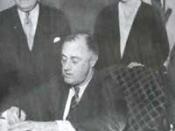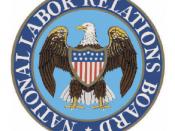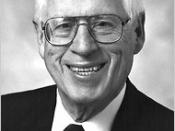Labor Relations � PAGE \* MERGEFORMAT �1�
Labor Relations
Jackleen Gerber
University of Phoenix
MGT/431: Human Resources Management
ON09BSM06
Dr. Jennie Wong, EdD, MBA, SPHR
November 03, 2009
�
�
Labor Relations
When workers believe that their employer is forcing more work and less pay or when their work consists of skills that are difficult to come by, they may collectively form a union. Labor relations come into play when dealing between management and employees interactions and working conditions. The present paper will define unions and labor relations and their effect on organizations. The effect of changes in employee relations strategies, policies, and practices on organizational performance will be examined. A final look at unions in the United States and if they are relevant will be answered.
Labor Relations and Unions
The book Fundamentals of Human Resource Management defines labor relations as skills that managers and union leaders can use to foster effective labor- management cooperation, minimize costly forms of conflict (such as strikes), and seek win-win solutions to disagreements (Noe, Hollenbeck, Gerhart, & Wright, 2007, p.
459). In 1935 congress passed the National Labor Relations Act that covered union issues as labor rights, the right to bargain, the right to strike, and protest. The National Labor Relations Act is also known as the Wagner Act that was upheld by the Supreme Court in 1937. Fair practice rules and minimum wage laws are examples of labor relations. Labor relations may also involve non-union employees in the private sector. The National Labor Board is an independent federal agency created by Congress in 1935 to administer the National Labor Relations between unions and employers in the private sector. The statute guarantees the right of employees to organize, bargain, and to engage in other protected concerted activity with or without a union, or...


